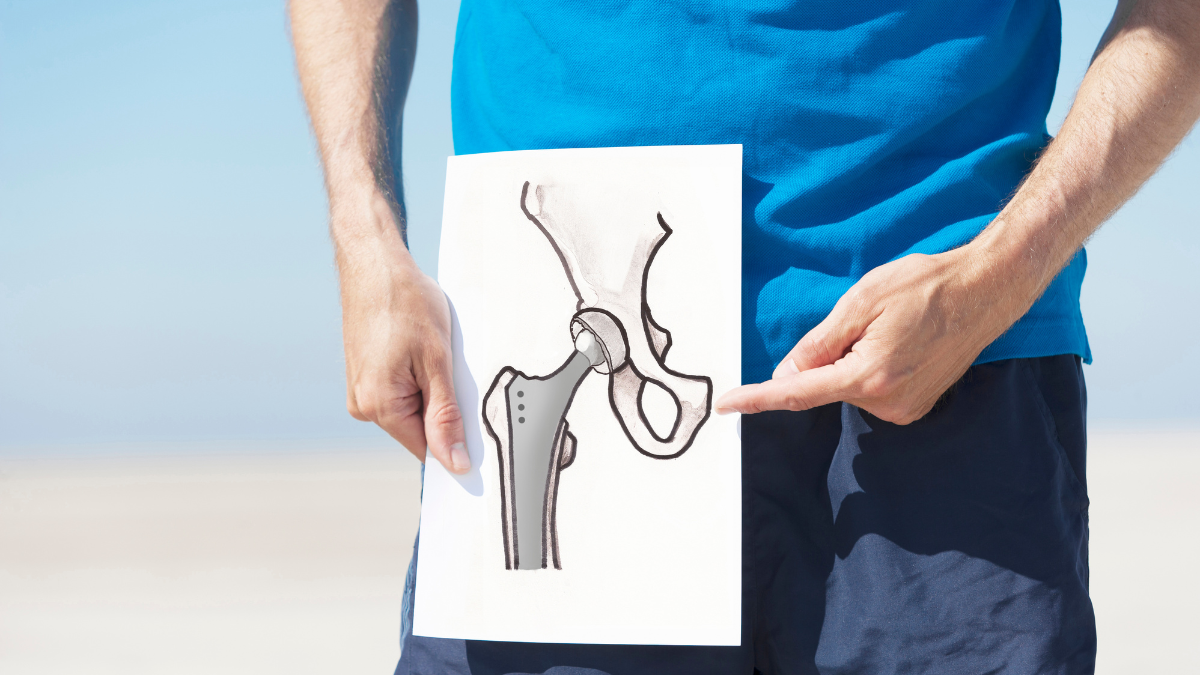- Opening hours: 24 Hours
- Call us today: +91 86960-97555
- Email us: info@drsskhatri.com
 The knee and Osteoarthritis
The knee and Osteoarthritis
The knee is a hinge-like joint made up of the femur (thighbone), tibia (shinbone), and patella (kneecap) held together by muscles, ligaments and ther important soft tissue.
In between the knee is a natural cushioning called meniscus that is made up of cartilage. This material provides shock absorption during weight bearing activities such as walking or climbing stairs. Through wear and tear, the cartilage in your knee can break down causing a disease known as osteoarthritis.
Age, obesity, heredity, gender and other factors can lead to the progression of osteoarthritis. Common symptoms include pain, swelling and stiffness.
Treatment for knee osteoarthritis
While there is no cure for osteoarthritis, there are multiple treatment options to manage the pain and potentially delay progression of the disease.
Non surgical treatment options
- Lifestyle changes: lose weight and avoid aggravating activities to
reduce the stress on your knee. - Exercises: lose weight and avoid aggravating activities to
reduce the stress on your knee. - Anti-inflammatory medications: lose weight and avoid aggravating activities to
reduce the stress on your knee. - Cortisone/steroid injection: lose weight and avoid aggravating activities to
reduce the stress on your knee. - Joint fluid therapy: lose weight and avoid aggravating activities to
reduce the stress on your knee. - Glucosamine/chondroitin: dietary supplements intended to support
joint health. - Bracing: used to provide external stability to the knee.
Surgical treatment options
- Arthroscopic surgery: lose weight and avoid aggravating activities to
reduce the stress on your knee. - Partial knee replacement surgery: lose weight and avoid aggravating activities to
reduce the stress on your knee. - Total knee replacement surgery: lose weight and avoid aggravating activities to
reduce the stress on your knee.

Reasons for surgery
Knee replacement surgery should be considered when all conservative measures fail to provide relief. Surgery may be performed for the following reasons:
- Relieve pain
- Improve joint stability
- Improve alignment and correct bone deformity
- Maximise quality of life
- Optimise activities of daily living
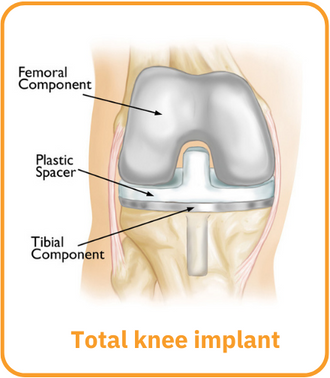
Total knee replacement
Total knee replacement is one of the most common surgical procedures performed in all of medicine; there are over 50,000 performed every year in Australia and New Zealand.
More than 90% of people who undergo total knee replacement experience dramatic relief in knee pain and are better able to perform common activities.
Total knee replacement removes and replaces the damaged knee surface with an implant. A total knee implant is made up of three parts: a metal femoral component (thighbone), a metal tibial component (shinbone), and a plastic spacer that is placed in between. A fourth component made of plastic is sometimes used to cover the back of the patella (knee cap).
Total knee replacement with Robotic Surgical System

Increased Accuracy through Advanced Imaging Techniques
The cornerstone of the Robotic Knee Replacement lies in its ability to utilize advanced imaging techniques to create a 3D model of the patient’s knee. This cutting-edge technology enables surgeons to make the most precise measurements and cuts, resulting in superior placement of the artificial knee joint. As a consequence, patients experience a more natural feel post-surgery, reducing discomfort and improving overall functionality.
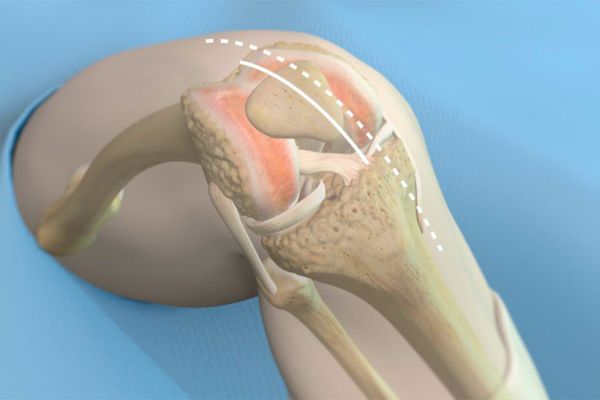
Enhanced Safety and Minimized Risk of Complications
The precision and accuracy of the Robotic Knee Replacement significantly reduce the risk of errors and complications during surgery. Surgeons can make smaller incisions due to the high level of accuracy, which minimizes trauma to the surrounding tissues. As a result, patients experience less pain and a faster recovery process compared to traditional knee replacement surgeries.
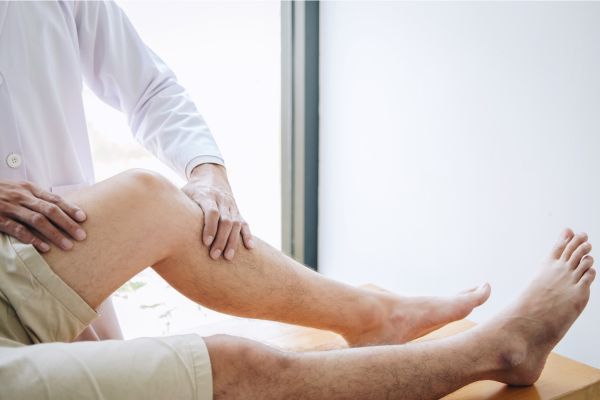
Faster Recovery and Improved Postoperative Rehabilitation
The minimally invasive nature of the Robotic Knee Replacement translates to a swifter recovery period. Patients often report reduced postoperative pain and an enhanced ability to resume normal activities sooner compared to traditional knee replacement surgery. The faster recovery enables patients to regain their independence and enjoy an improved quality of life in a shorter timeframe.

Long-Term Results and Enhanced Mobility
Numerous studies have demonstrated the long-term success of the Robotic Knee Replacement. Patients who undergo this innovative procedure often experience greater mobility and improved quality of life for many years following surgery. This longevity of positive outcomes highlights the durability and efficacy of the Robotic Knee Replacement as a reliable solution for patients seeking knee replacement surgery.
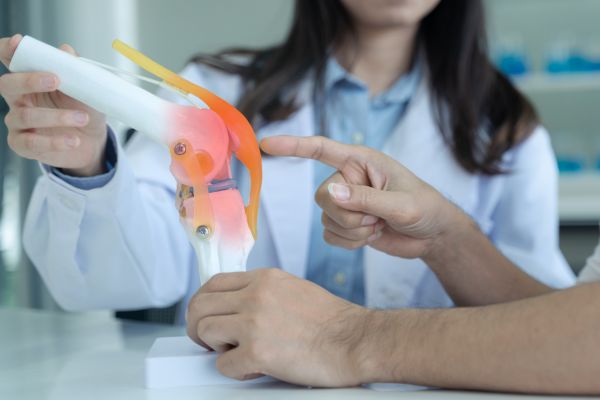
Personalized Approach for Optimal Fittings
Every patient’s knee is unique, with distinct variations in size and shape. The Robotic Knee Replacement offers a highly personalized approach, ensuring that the fitting and placement of the artificial knee joint are tailored to each patient’s specific needs. This level of customization leads to a better fit, greater comfort, and improved mobility for the patient, ultimately contributing to a better quality of life after the procedure.
Preparation for surgery
There are several activities that you should plan for once you decide to have surgery:
Initial surgical consultation: Preoperative x-rays, complete past medical history, complete past surgical history, complete list of all medications and allergies (prescription, over-the-counter, vitamin supplements).
Complete physical examination: Your doctor may determine if you are in the best possible condition to undergo surgery.
Blood donation: A transfusion may be necessary after surgery, therefore you may wish to donate blood prior to surgery.
Physiotherapy: Instruction in an exercise program to begin prior to surgery and an overview of the rehabilitation process after surgery will better prepare you for post-operative care.
Preparation for the hospital: You may want to bring the following items:
- Clothing: underwear, socks, t-shirts, exercise shorts for rehabilitation.
- Footwear: walking or tennis shoes for rehab; slippers for hospital room.
- Walking Aids: walker, cane, wheelchair or crutches if used prior to surgery.
- Insurance Information
Preparation before surgery:
- Follow your surgeon’s instructions for preparation the evening before surgery.
- You may be advised not eat or drink after midnight.
- Shower (with five minute scrub to surgical area with special soap provided).
- Prepare your belongings and review total knee booklet.
Preparation for after surgery:
- Move items and furniture in your home so they are easier to access while your mobility is limited.
- Remove clutter and obstacles that could be tripping hazards.
- Have a plan; preparing meals ahead of time and arranging visitors to help with everyday chores will make your recovery smoother.
What to expect in surgery
You will first be placed under anaesthetic to relax your body for surgery and block pain. The correct form of anaesthetic will be discussed and determined prior to surgery with your surgeon and anaethetist.
Your surgeon will then make an incision that extends several centimetres above the knee cap to several centimetres below the knee cap. Using the robotic system, special trackers are secured to both the thigh bone (femur) and shin bone (tibia) with four small surgical pins placed through tiny incisions in the skin.
These trackers are crucial to the precision of the system as they provide a constant reference point to the surgeon throughout the procedure.
Using computer assistance, the unique shape and motion of your knee are collected by the surgeon. This allows for a three-dimensional model of your knee to be generated and used by the surgeon to plan the procedure. Proper implant size and position will be determined at this time.
Once your surgeon virtually determines the correct implant size and positioning, a handheld robotics- assisted tool is used to accurately position bone removal cut guides.
These cut guides enable the surgeon to use a surgical saw to remove your damaged knee bone, making room for the implant. The extra layer of precision provided by the robotic system is designed to enable accurate cut guide placement.

Download Discharge Instructions
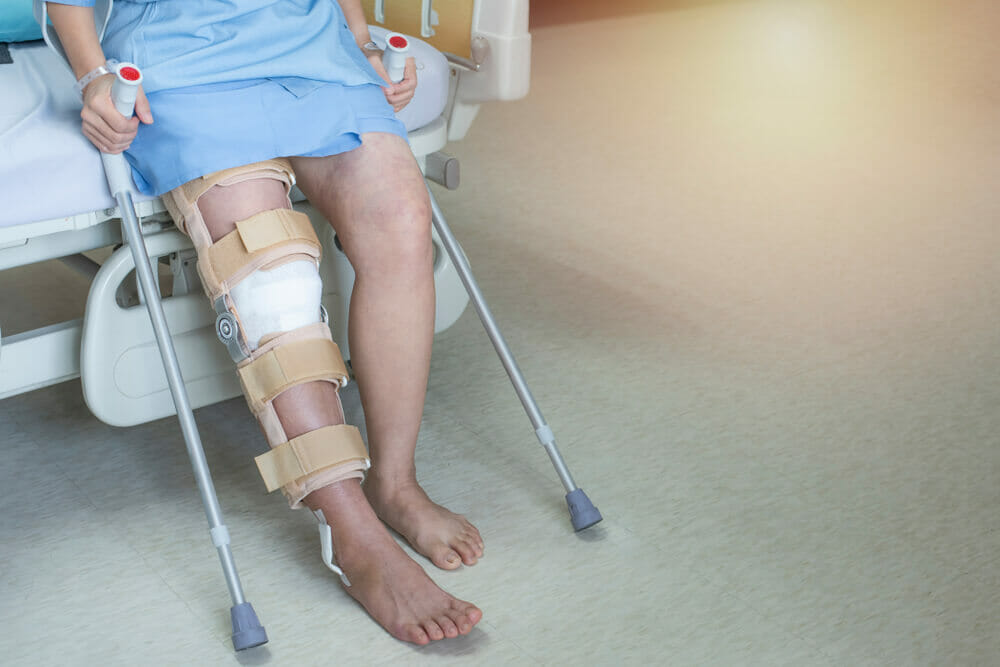
Postoperative
Immediately after surgery you will be monitored as you awake from anaesthetic. Once awake,
you will be taken to your hospital room. Plan to stay in the hospital for several days.
In addition to the incision along your knee there will be two small incisions on both your
thigh and lower leg where the tracker pins were placed. Expect to feel some pain. This is a natural part of the
healing process. Your doctor and nurses will work to reduce your pain.
Most patients begin exercising their knee the day after surgery, although each patient’s
postoperative care will vary. A physiotherapist will prescribe exercises to help restore knee strength and function,
and increase range of motion in your knee. It is common to experience swelling, stiffness and tightness at this
time.

Rehabilitation following surgery
The success of your surgery will largely depend on how well you follow your surgeon’s instructions the first few weeks following surgery. How quickly you recover depends on factors such as knee pain, flexibility, strength and balance. Follow up visits will likely be scheduled to check up on your condition and progress as you recover.
In order for you to meet the goals of knee replacement surgery, you must take ownership of the rehab process and work diligently on your own as well as with your physiotherapist. The rehabilitation process can be quite painful at times. However, if you commit to following your program and overcome the challenges in rehab, you will succeed in meeting the goals you set when deciding on surgery.
Robotic Knee Replacement In Jaipur : ‘Debunking Myths and Misconceptions
The popularity of robotic assisted surgeries (RAS), commonly called robotic surgeries, has increased immensely over the past few years. India is also seeing an increasing acceptance of robotic surgery among surgeons and patients, given its various benefits and advantages, as compared to conventional open surgery. Among other benefits, robotic surgery offers faster recovery, less pain and discomfort, minimal blood loss, reduced risk of infection, greater precision, smaller scars. But there are still many misconceptions and myths about robotic knee replacement surgery,that are stopping people from choosing this advanced procedure. Robotic knee replacement surgery in jaipur has become the talk of the town lately, and it’s not hard to see why.
In a tete-a-tete with Dr S.S Khatri, Senior Consultant Orthopaedics, Joint Replacement & Robotic surgery,Vaishali Nagar, jaipur debunks some of the common myths about robotic knee replacement surgery as well as addresses common concerns patients have after the surgery.
Benefits of robotic knee replacement for advanced arthritis
The advantages of robotic knee replacement surgery are significant:
Reduced post-surgery pain
Increased accuracy
Reduced complications
Improved long-term functionality
Enhanced patient satisfaction
Conclusion
In conclusion, robotic knee replacement surgery has emerged as a groundbreaking advancement that challenges several misconceptions associated with the procedure. The benefits it offers, including decreased pain, enhanced precision, and accelerated recovery, make it a promising solution for individuals experiencing advanced arthritis. It is imperative for patients to stay informed about these technological advancements and engage in thorough discussions with orthopedic specialists to determine the most appropriate treatment options for their unique circumstances. By embracing robotic knee replacement surgery, patients can potentially regain mobility, alleviate pain, and enhance their overall quality of life.
Get Best & Affordable Treatment.
Get In Touch In The Mean Time.
Our mission is to provide high quality chiropractic care, supportive therapies and nutritional weight loss solutions
Plot No. 7a, Amrapali Marg
Block a,
Vaishali Nagar, Jaipur
Get an Appointment
Team of Professionals




Read Our Latest News & Articles
Find out what’s new and get updates on treatments, procedures, incredible patient stories, and special cases in our blog section.




